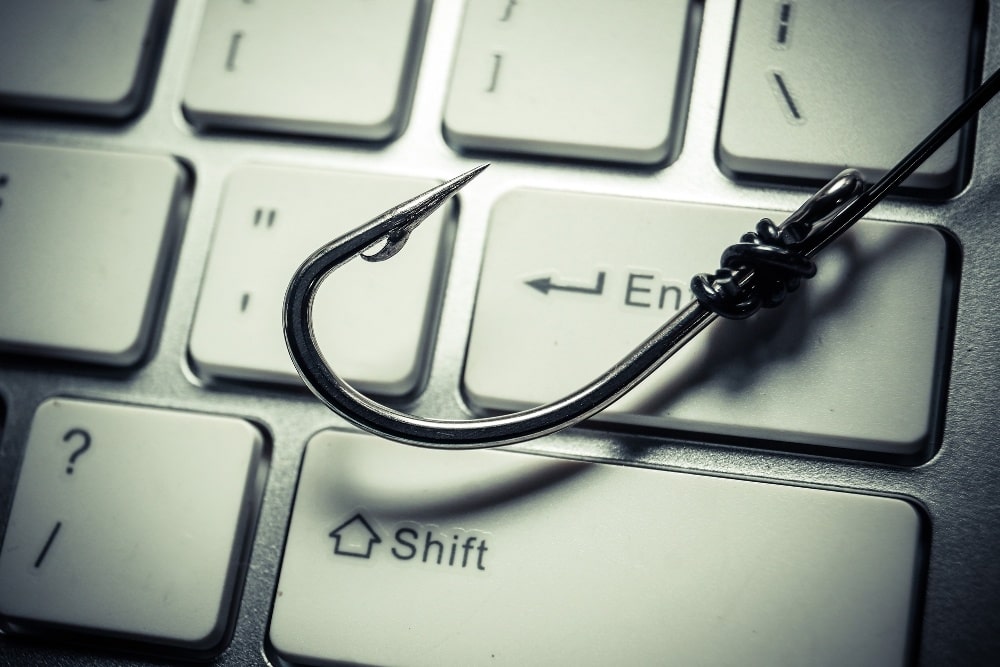SonicWall Protects Customers from the Latest Phishing Attacks 
About Phishing Emails
Okay, so most of us know something about phishing emails. We’ve been warned many times about how criminals use emails that look almost exactly like the real thing to get us to click on a link that allows them to capture sensitive password information.

We know that we should never click on a link provided in an email. If the link is legitimate, you can access the same information by going through the company’s actual web address that you looked up yourself, and then signing in from there.
If it’s a real email from the company concerned, there’s no harm. If it is a malicious email, at least you’re not putting yourself at risk.
However, are you fully prepared for the kinds of attacks modern phishers launch? What if you get a request from someone you know who is sharing a Google doc with you? That’s got to be safe, right?
Well, the reason that we bring it up is because of a phishing scam that was carried out this way. It caught many unsuspecting people off guard.
The signs were there if you knew to look for them. The email looked benign and seemed to be from Google. In fact, it even directed you to the “Choose an Account Screen.†However, it was the next step of the process that was the top clue.
You were asked to allow Google to manage your contact and read your emails. You didn’t have to enter your password, so it seemed okay. If you authorized that app, it got instant access to your emails and contacts. It even sent out emails to your contacts to run the scam again on new victims.
In retrospect, it was a pretty obvious scam, but considering how many people fell for it, it proved pretty successful. It should serve as a wakeup call, though — the phishers are out there, and they’re pretty good at what they do.
What can you do to protect yourself?
SonicWall Protection
Your best defence is to block phishing emails before they even get to you. Installing Sonicwall security for phishing emails is an excellent place to start. This program goes beyond simple anti-virus scans and analyses each message being sent to your system.
With the Sonicwall email protection system in place, you’re protected from many different types of threats including phishing, ransomware, spam and viruses. If it’s a threat that’s coming in through email, the Sonicwall phishing protection programs will pick it up and stop it.
There’s no need to worry about a staff member or anyone else accidentally clicking on a link in an email and exposing your whole system. The system is cost-effective. You need only buy one license per server and, at about £200 (VAT included), that’s really good value for money.
It runs automatic updates so that you can always be assured of the most up to date protection. Best of all, it integrates seamlessly into your existing system, providing real-time protection against a varied range of threats.
Cybercrime is big business, and the criminals are getting more sophisticated by the day. There are countless threats out there, and all it takes is for one person to click on the wrong link to expose your systems.
When you consider the reputational risk and liability issues that a data breach exposes your company to, a couple of hundred dollars is a very small investment to protect your system. Contact SonicWall Sales to find out what the right solution for your business is.
What else can you do?
Even with the Sonicwall Email Security system, it’s good practice to take some basic steps to protect yourself against these kinds of requests. Here are some quick tips:
- Never click a link in an email unless you know exactly where the link will take you. Some of these site names will look like the real thing, but there’ll usually be something off. Maybe a slightly different spelling or something similar
- To be perfectly safe, if you receive an email purporting to be from a company like Microsoft and asking you to confirm something, ignore the link and go to the website. If you need to download or check anything, do it from the vendor’s site
- Where you can, enable 2-factor authentication. It’s a pain, but it provides excellent security
Finally, ask yourself these questions.
Does it make sense for the company to have sent that email? Have they ever sent similar emails before?
If you’re not sure, look up the vendor’s contact information and ask them directly.


